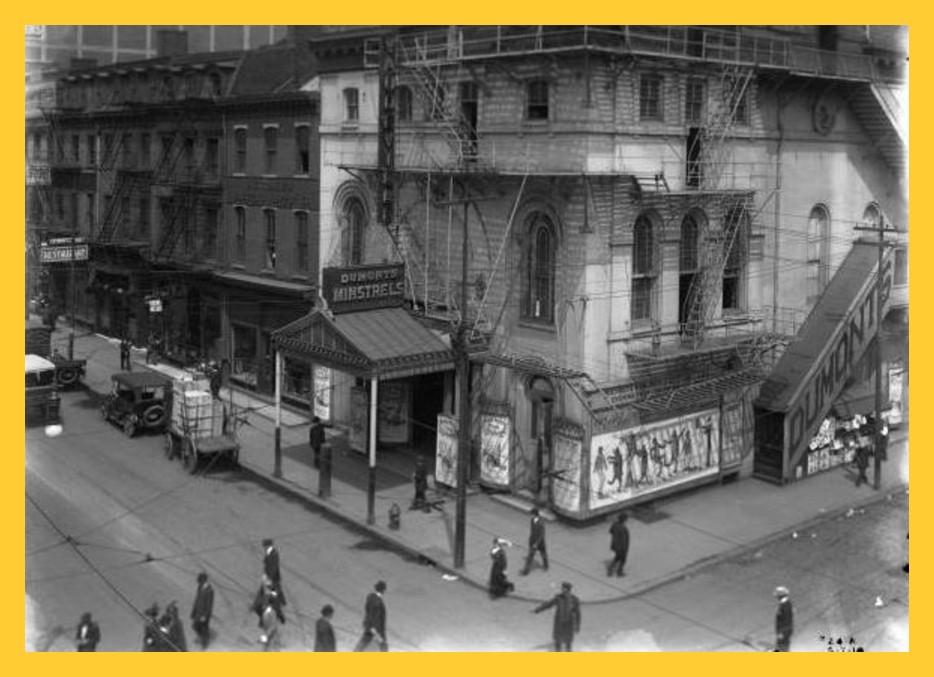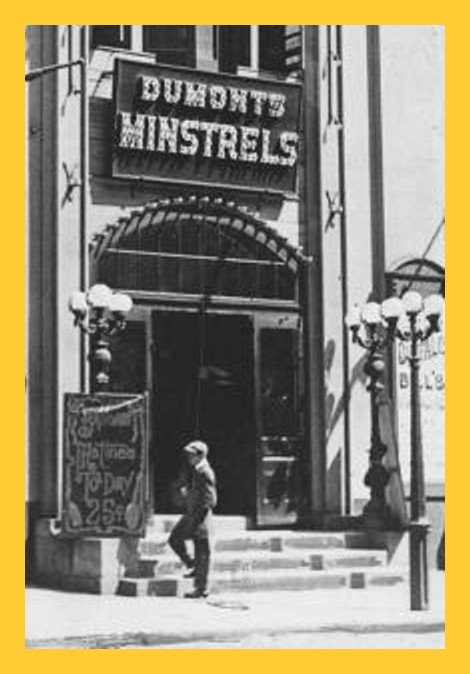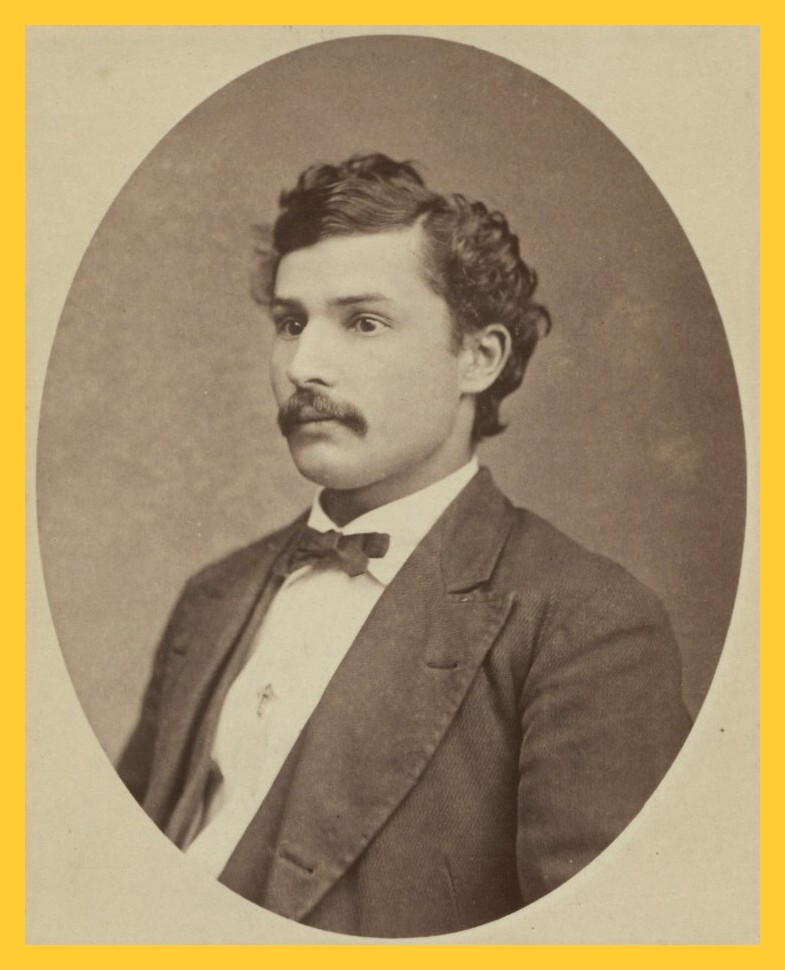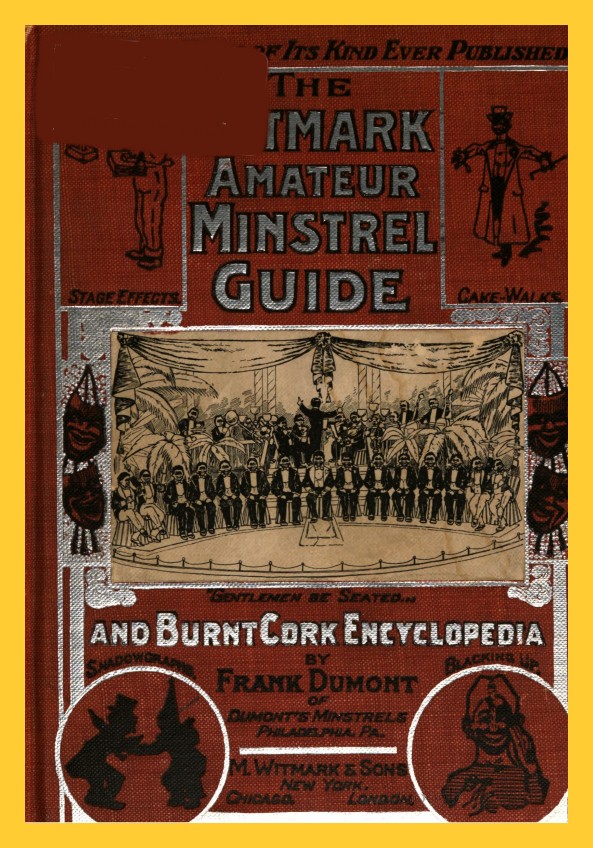
An undated photograph of the Dumont’s Minstrel Theatre at the corner of 9th and Arch Streets, Philadelphia, operated by Frank Dumont, nationally-known master of the minstrel. Dumont acquired the theatre in 1911 after being at 11th and Ludlow Streets for many years, when that theatre was demolished.
A small portion of the façade of the 11th Street Theatre is shown below.

The 11th Street Opera House, as the theatre was known in 1906, was where George A. Kosier of Lykens, Dauphin County, Pennsylvania, visited to “procure the latest and up-to-date songs.” At the time Kosier was head of the Lykens and Wiconisco Colored Minstrels who were planning a major production for 1906.
Frank Dumont, based in Philadelphia, was one of the leading authorities on minstrelsy. His theatre there was home to his own troupe of minstrels and his collection of minstrel memorable was available for reference to leaders of minstrel groups throughout the United States.
In 1899, Dumont authored The Witmark Amateur Minstrel Guide and Burnt Cork Encyclopedia, which became a standard guide to the medium. A free download is available from GoogleBooks.
Dumont dropped dead on March 17, 1919, in the box office of his theatre while one of his performances was going on.
A collection at the Historical Society of Pennsylvania, Philadelphia, contains seven boxes of Dumont’s scrapbooks documenting the history of minstrelsy from 1850-1902.
The Lykens Standard, January 12, 1906, reported on George A. Kosier‘s excursion to Philadelphia as follows:
Fun Ahead
The Lykens and Wiconisco Colored Minstrels, upon the earnest solicitation of a committee of theatre goers, have consented to again appear in the opera house, (the date will probably be February 22nd, Washington’s Birthday). In addition to the store of natural wit and funny sayings possessed by these talented and fun-loving citizens, George A. Kosier, manager, will go to Philadelphia next week to procure the latest and up-to-date-songs, as sung by the world-renowned Dumont’s Minstrels.
The music will again be furnished by the K. of P. Orchestra, under the leadership of Prof. C. A. Zarker. Watch for the program in the near future. The theatre goers have always shown their appreciation heretofore by crowded houses and this coupled with the influence of the committee, alone has induced the boys to again appear. Let us give them a rousing reception.
An the Elizabethville Echo picked up on the story on January 18, 1906:
George A. Kosier left for Philadelphia to get up-to-date material of Dumont’s Minstrels for the benefit of home-talent, to be given in the Lykens Opera House on February 22nd [1906], by the Lykens and Wiconisco Colored Minstrels. They always have a first class show and play to a full house.
No evidence has been seen that the show indicated for February 22 was actually performed.
White men and women, who blackened their faces, and performed emphasizing negative stereotypical behavior that they attributed to African Americans, for the purpose of getting laughs, were often the most prominent people in the community.
This post is part of a series in which news articles, photographs and other “memorabilia” are presented to show how “black-face” was infused into the culture of the Lykens Valley area. Readers are invited to submit photos and recollections on how long this offensive “entertainment” lasted and what locals thought of it as part of the culture of the area.
________________________________________
News articles from Newspapers.com.
For the complete photo of the 11th Street Opera House, see the Temple University Digital Collections. Theatre photo from Philadelphia’s On-Line Digital Archive. Photo of Frank Dumont from Wikipedia. A complete, free download of Dumont’s book is available from GoogleBooks.
Corrections and additional information should be added as comments to this post.

